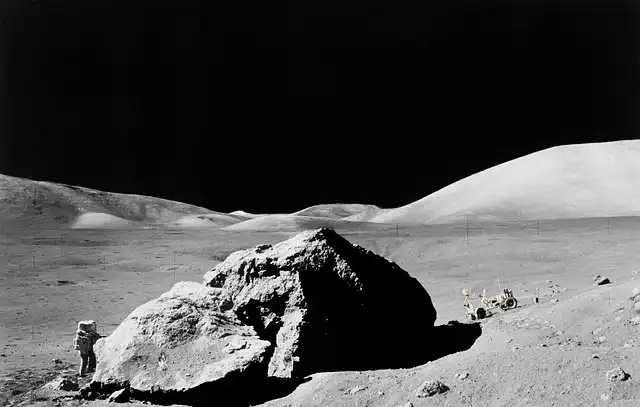Oakley Designs Visor for Artemis III Moon Mission

Oakley partners with Axiom to design a stowable visor for the Artemis III mission, protecting astronauts from radiation, temperature, and micrometeorites with advanced optical technology for enhanced lunar exploration.
Oakley was picked by Axiom to style and designer a “stowable two-part deployable visor” utilizing the most recent optical modern technology to equip the staff for the visual environment in space. When astronauts land on the moon’s surface area for the Artemis III objective, they’ll need a spacesuit optical system that will give them aesthetic clearness and defense versus infrared light, extreme temperature level, and micrometeorites. They’ll additionally require glasses that enables them to see while they explore the moon’s south pole, which is completely tailed.
Commercial Space Suits
For people’ previous mission to the moon in the 1970s, the spacesuits that Nasa’s astronauts used were government possessions, made and owned by the US federal government. But Axiom’s business service-based agreement with Nasa enables the firm to partner with other brand names in the performance wear market and introduce the collaborations openly. When it comes to space exploration, Lopez-Alegria and Ralston believe this opens more inspiration for future generations.
AxEMU Visor Technology
The companions state the new AxEMU visor’s innovative modern technology– that includes adjustable protection from dangerous radiation precede, a layer made from gold to reflect extreme light and improve visibility, and a scratch-resistant finishing to protect against lunar dust– will shield astronauts’ eyes from this unsafe radiation, while giving them the aesthetic clarity they need as they explore the moon’s surface.
“When we have actually been on orbital objectives, which is all human beings have done given that 1972, we’ve been educated to put our visors down before the sun increases, and increase them when it goes down,” Michael Lopez-Alegria, Axiom’s chief astronaut, tells Style Service in an interview.
The astronauts picked to staff the upcoming objective are yet to be revealed, Nasa has actually mentioned that “for the benefit of all humanity, Nasa and its companions will certainly land the first female and very first individual of colour on the surface area of the moon with Artemis.”
“I believe what this does is that, in addition to appealing to all the area geek kids out there, we’re appealing to an entire various team of youngsters that appreciate looks. Why would not we tap right into that?” Lopez-Alegria includes.
Aesthetic Clarity in Space
“However we chose to take a point of view that it does not have to be or, it can be an and– we can have a fit that is secure and high carrying out and optimised for the demands of the goal, and, at the exact same time, be visually pleasing.
“If you think of when you’re in bright sunlight, every little thing that is in shadow seems also darker, due to the fact that your eyes are getting used to the illumination,” Lopez-Alegria claims. “Oakley’s specialism is making sunglasses that can maintain aesthetic skill also in brilliant sunlight, so they were the excellent partner to develop the performance covering of the space visor to aid us with these transitions.”
“That happens every 45 mins when you’re going around the Planet, and if you forget to place the visor down at sun-up, you’ll be swiftly reminded: the sun is absolutely blazing precede, it is the best, brightest light you can think of.”
Challenges on the Moon
If you were lucky sufficient to come down on the moon, you ‘d be rather eager to spot your surroundings. Yet the UV radiation and lunar dirt on the moon’s surface make this much less complicated said than done. Sports performance glasses brand Oakley has actually been tasked with the service.
For human beings’ previous goal to the moon in the 1970s, the spacesuits that Nasa’s astronauts used were government assets, made and owned by the US federal government.
“The looks of the suit is not something that’s typically been thought about quite in the past, and definitely a great deal of the engineering design starts leading and very first with the technological,” Russell Ralston, executive vice president of Axiom’s program management and design, informs Vogue Company.
Securing astronauts like Lopez-Alegria from the moon’s visually complex and aggressive problems calls for elaborate optical design, and Oakley has been picked to design the eye protection for the following human beings to arrive on the moon. In 2027, when astronauts remove for the Artemis III mission– the very first human lunar touchdown since Apollo 17 back in 1972– they’ll wear a space visor co-designed by Oakley and its main partner, Axiom Room.
Protecting Astronauts’ Eyes
If you were fortunate adequate to land on the moon, you ‘d be rather eager to catch view of your environments. The UV radiation and lunar dust on the moon’s surface area make this much less complicated claimed than done. When astronauts land on the moon’s surface for the Artemis III objective, they’ll require a spacesuit optical system that will certainly give them visual clarity and protection versus infrared light, severe temperature level, and micrometeorites. They’ll additionally require glasses that allows them to see while they explore the moon’s south pole, which is completely shadowed.
In space, it’s also a lot more essential due to the fact that we don’t have an ambience like Earth’s that aids filter some of that out,” Ralston informs Style Service. The solar layers and various other features that we have actually included to the Oakley room visor are important for protecting the astronaut.
1 Artemis III2 Astronaut Protection
3 Moon Mission
4 Oakley
5 Optical Technology
6 Space Visor
« American Eagle + Snapchat: Back-to-School Gen Z PushBack-to-School Deals: Walmart, Target & Spending Trends »
